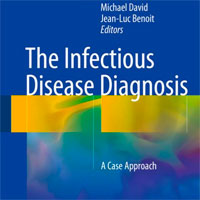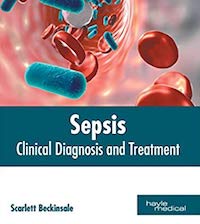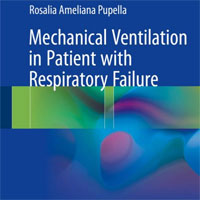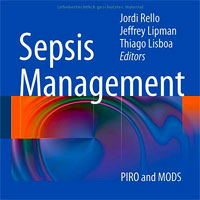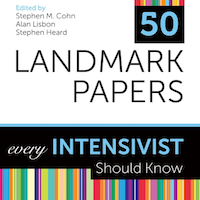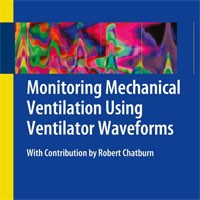Tag: ventilation
Pitfalls in the Management of Mechanical Ventilation: ARDS and Hypermetabolic States
Mechanical ventilation (MV) is a lifesaving intervention for patients with respiratory failure due to acute respiratory distress syndrome (ARDS) and septic shock. ARDS was first recognized in the late 1960s, approximately... read more
Impacts of Initial ICU Driving Pressure on Outcomes in Acute Hypoxemic Respiratory Failure
Driving pressure (DP) is a marker of severity of lung injury in patients with acute respiratory distress syndrome (ARDS) and has a strong association with outcome. However, it is uncertain whether limiting DP can reduce... read more
Teaching Pearls in Noninvasive Mechanical Ventilation
This book uses real-world clinical case analyses of hot topics to provide insights into noninvasive mechanical ventilation (NIV). Written by leading international teachers and experts, it features a selection of "major... read more
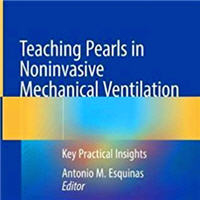
Preventing VAP Non-Pharmacologically
In critically ill, intubated patients on intensive care unit (ICU), ventilator-associated pneumonia (VAP) is a significant complication contributing to substantial mortality, morbidity, and prolonged stays, which in turn... read more
Ventilator Management: A Pre-Hospital Perspective
The goal of this book is to provide the most up to date information on mechanical ventilation based on current research, evidence based practice and my experiences as a flight paramedic and educator. A comprehensive look... read more

How I Perform Diaphragmatic Ultrasound in the ICU
The diaphragm is a thin, dome-shaped muscle, comprising a costal and crural part, and a non-contracting central tendon. Muscle fiber activation shortens and thickens the diaphragm in the zone of apposition, moving the dome... read more
Spontaneous Breathing Trials Should Be Adapted for Each Patient According To The Critical Illness
Unassisted SBTs, namely PSV0PEEP0 and T-piece trial, are the most appropriate to replicate the postextubation effort to breathe. In this multicentre randomized cross-over study, adult intensive care unit patients under... read more
Outcomes and inflammation changes in different types of immunocompromised patients with critically ill COVID-19 admitted to ICU
Critically ill COVID-19 patients admitted to the ICU exhibit distinct clinical outcomes based on their immunosuppression status, with cancer patients facing the highest mortality rate due to variations in inflammatory responses... read more
A Retrospective Closed Cohort Study on Distribution of Multidrug-Resistant Bacteria in VAP and its Impact on Patient Outcome
Gram-negative organisms, particularly Klebsiella and Acinetobacter, were the main multidrug-resistant (MDR) ventilator-associated pneumonia (VAP) culprits. MDR-VAP exhibited higher morbidity and mortality. A study... read more
Reducing Deep Sedation and Benzodiazepine Use in Mechanically Ventilated Patients During Critical Care Transport
The rate of deep sedation in this cohort was consistent with previously published data; however, it remains higher than clinically indicated. Over the course of the QI project, the proportion of deeply sedated patients... read more
Respiratory Effort in Mechanical Ventilation Weaning Prediction
This study demonstrates that PMI and ΔPocc are effective in predicting weaning outcomes in patients with DT≥2mm. The effectiveness of P0.1 in assessing weaning is also significantly higher in this subgroup. These findings... read more
Optimizing Oxygenation For Tracheal Intubation in Critically Ill Patients
Tracheal intubation (TI) is a common procedure frequently performed in critically ill patients and is an integral part of emergency airway management (EAM). However, it carries inherent risks and can significantly impact... read more
Sex Differences in the Outcome of Critically Ill COVID-19 Patients
Among patients admitted to ICU for severe COVID-19, males experienced higher severity of illness and more frequent intervention than females. Ultimately, the hazard of death was moderately elevated in males compared to females... read more
Impact of the Timing of Invasive Mechanical Ventilation in Sepsis Patients
In patients with sepsis admitted to ICU and received invasive mechanical ventilation (MV), early MV was associated with lower ICU and in-hospital mortality and a shorter ICU stay. Additionally, at ICU discharge, early... read more
Conservative or Liberal Oxygen Targets in Patients on VA-ECMO
In adults receiving VA-ECMO in the ICU, a conservative compared to a liberal oxygen strategy did not affect the number of ICU-free days to day 28, nor any other measurable patient outcomes up to 6 months after ICU admission.... read more
Low-Frequency Ventilation May Facilitate Weaning in ARDS Treated with ECMO
Low-frequency ventilation is comparable to conventional protective ventilation in patients with ARDS who have been treated with ECMO. However, low-frequency ventilation may support weaning from invasive mechanical ventilation... read more
A prediction model for nonresponsive outcomes in critically ill patients with ARDS undergoing prone position ventilation
In this study, a risk prediction model for nonresponse to prone position ventilation in acute respiratory distress syndrome (ARDS) patients was constructed, which demonstrated good predictive value and clinical utility. Early... read more
Influenza and COVID-19 Vaccination Rates Among Children Receiving Long-Term Ventilation
Children with tracheostomy and HV are at high risk of morbidity and mortality from viral ARIs. Among MyTRaCh enrollees, we found significant discrepancy between influenza and COVID-19 vaccination status. Compared with... read more
How does high fowlers position help with ventilation?
The High Fowler's position, characterized by an inclination of 60-90 degrees, significantly enhances ventilation by optimizing lung expansion and improving respiratory mechanics. This position is particularly beneficial for... read more
COVID-19 ARDS Patients vs. Patients with ARDS
Ventilation management may differ between COVID–19 ARDS (COVID–ARDS) patients and patients with pre–COVID ARDS (CLASSIC–ARDS); it is uncertain whether associations of ventilation management with outcomes for CLASSIC–ARDS... read more
Tracheal Intubation in Critically Ill Adults with a Physiologically Difficult Airway
Using a Delphi method, agreement among a panel of international experts was reached for 53 statements providing guidance to clinicians worldwide on safe tracheal intubation practices in patients with a physiologically difficult... read more
Ultrafast Cooling With Total Liquid Ventilation Mitigates Early Inflammatory Response
Ultrafast cooling with TLV mitigates neuroinflammation and attenuates acute brain lesions in the early phase following resuscitation in large animals subjected to cardiac arrest (CA). Brain injury is one of the most serious... read more


